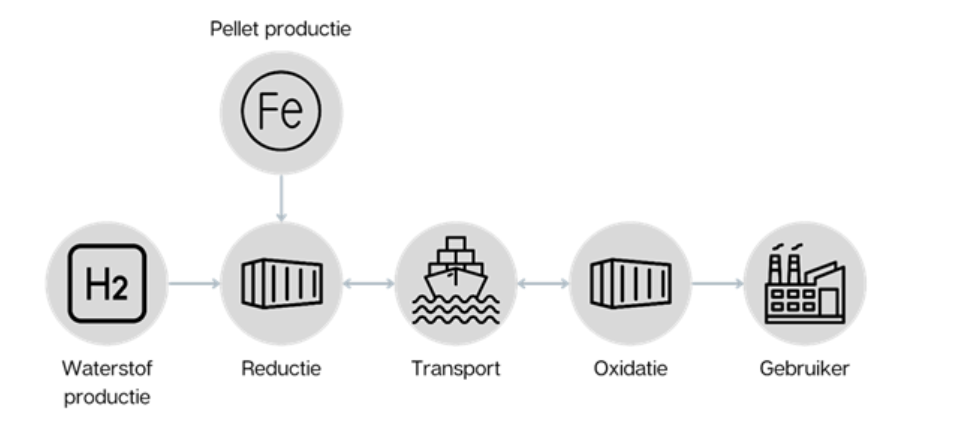Out of all the clues on what is solid, how is it working, what do they do. There was more curiosity on how to really make it work? Isn’t that money which comes to mind, which may act as a barrier? Yes the techno – economical feasibility of the system was still needed to be sorted out. Well, the team of bright minds set out on a quest to solve this pressing issue: how to store and transport hydrogen, a clean but tricky energy source. Hydrogen was powerful but hard to contain—light, flammable, and requiring high pressures or freezing temperatures to store safely.
Then, the team discovered a novel solution — IRHYS! Instead of storing hydrogen as a gas, IRHYS stores it within iron. The process was simple but clever. By reacting steam with iron, IRHYS could extract hydrogen safely, without the risks associated with high-pressure gas storage. The iron could then be “recharged” with hydrogen in a sustainable cycle. This innovation promised a safer, more flexible way to deliver hydrogen where it was needed.
But the team faced tough questions: Was IRHYS truly practical? Could it be affordable and competitive in a world dominated by traditional fuels? To find out, SOLID together with DNV, started a detailed Techno-economic feasibility study. First, we analysed different markets. They found that IRHYS could be a perfect fit in sectors like transportation, industrial heat, and even hydrogen-based fuels. However, for large-scale uses like refineries or ammonia production, IRHYS wasn’t the best choice—those industries needed too much hydrogen for IRHYS to keep up.
The team also calculated the economic aspects. They used complex models to estimate the costs of transporting iron pellets loaded with hydrogen. Their findings were hopeful. In many scenarios, IRHYS was both affordable and sustainable, particularly for smaller-scale industries or as a backup energy source.
Then came the environmental benefits. Because IRHYS didn’t require high-pressure storage, it could help prevent emissions from hydrogen leaks. The technology was clean, safe, and adaptable, which added to its appeal for places like the Netherlands and beyond.
In the end, it’s a win that IRHYS had strong potential as a hydrogen storage and delivery system, especially in various sectors of industries. The team’s work was ground breaking—offering a new, greener path forward for hydrogen. And so, IRHYS took its place in the world, a bright idea ready to help power a sustainable future.

“Developing the ecosystem for the Iron-based Hydrogen Storage technology”
© 2024 Team Solid. All Rights Reserved. Ontwikkeld door WEBZIES.